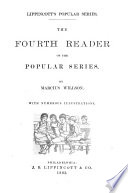 | C. J. Kemper - Mechanics - 1882 - 286 pages
...point, practically available at another, are called the mechanical powers. Amongst them may be reckoned the Lever, the Wheel and Axle, the Pulley, the Inclined Plane, the Wedge, and the Screw. It will be seen, however, that these six may be reduced in principle to two, the Lever and the Inclined... | |
 | James Melville M'Culloch - 1882 - 442 pages
...machines, which are called the mechanical powers, are six in number, and have the following names, — the Lever, the Wheel and Axle, the Pulley, the Inclined Plane, the Wedge, and the Screw. Every one has seen men raising a stone by means of a bar of iron. This bar is a Lever. In this machine... | |
 | Selina A. Bower - 1883 - 96 pages
...one of the six mechanical powers. Let me see if I remember them, it is so long since I learned them. The lever, the wheel and axle, the pulley, the inclined plane, the wedge, and the screw. All these six forces are most valuable to man, as they give him power over motionless matter, and enable... | |
 | Joseph Hassell - 1883 - 416 pages
...the class that all the contrivances can be grouped under one or other of six simple machines, namely, the Lever, the Wheel and Axle, the Pulley, the Inclined Plane, the Wedge, and the Screw. These are called the Mechanical Powers. Three of these are considered primary, namely, the lever, the... | |
 | Joseph David Everett - Physics - 1883 - 340 pages
...applications of the foregoing principles; and we shall begin with the so-called " mechanical powers," namely, the lever, the wheel and axle, the pulley, the inclined plane, the ivedge, and the screw. 38. Problems relating to the lever are usually most conveniently solved by taking... | |
 | Marcius Willson - Readers - 1883 - 352 pages
...well, we must know all about tools and their uses, and all about the mechanical powers, — such as the lever, the wheel and axle, the pulley, the inclined plane, the screw, and the wedge. 7. "And then we must know all about the different movements given to machinery... | |
 | Joseph Anthony Gillet, William James Rolfe - Physics - 1884 - 538 pages
...complicated, is made up of a very few elements, called simple machines, or mechanical powers : These are the lever, the wheel and axle, the pulley, the inclined plane, the wedge, and the screw. The force applied to work the machine is called the power; and the resistance overcome by the machine,... | |
 | Edwin James Houston - Physics - 1884 - 224 pages
...work can be done by any machine than that expended in working or moving it. The mechanical powers are the lever, the wheel and axle, the pulley, the inclined plane, the wedge, and the screw. In a lever of the first class, the fulcrum is between the power and the weight. In the second class,... | |
 | Augustin Privat-Deschanel - Physics - 1884 - 282 pages
...applications of the foregcing principles; and we shall begin with the so-called "mechanical powers," namely, the lever, the wheel and axle, the pulley, the inclined plane, the wedge, and the screw. 56. Lever. — Problems relating to the lever are usually most conveniently solved by taking moments... | |
 | Thomas Hunter - Home schooling - 1884 - 670 pages
...soon fills it to a level with that in the canal above, the boat rising with it, ready to proceed. 43. The Lever, the Wheel and Axle, the Pulley, the Inclined Plane, the Wedge and the Screw. 44. Levers are divided into three classes: in the first class, the fulcrum is between the power and... | |
| |